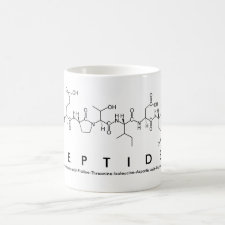
Authors: Maier G, Griebel T
Article Title: Molecular imprinting and molecular recognition in hyperbranched polymers.
Publication date: 2001
Journal: Abstracts of Papers of the American Chemical Society
Volume: 221
Issue: (MSE)
Page numbers: 168.
Abstract: Molecular imprinting (pioneered by Wulff in 1972) has been developed to mimic molecular recognition of biological systems (e.g. antigen/antibody or enzyme/substrate recognition) with synthetic polymers. Carefully selected combinations of functionalized polymers, templates, crosslinkers, crosslinking density, solvent, and non-solvent (porogen) allow the creation of crosslinked polymers with cavities which can selectively bind molecules. Enzyme-like catalysts are possible using templates which mimic the transition state of chemical reactions. Our new approach utilizes hyperbranched polymers with a catalytically active center at the focal group as matrix for imprinting, Imprinting is achieved in solution by internal fixation of the conformation of the hyperbranched polymer in the presence of the template through crosslinking. This results in improved accessibility of the imprinted recognition sites, and in recognition by induced fit (as in enzymes) rather than the rigid key/lock principle. The paper describes the synthesis of such imprinted hyperbranched polymers and the first results of selectivity studies



Join the Society for Molecular Imprinting

New items RSS feed
Sign-up for e-mail updates:
Choose between receiving an occasional newsletter or more frequent e-mail alerts.
Click here to go to the sign-up page.
Is your name elemental or peptidic? Enter your name and find out by clicking either of the buttons below!
Other products you may like:
 MIPdatabase
MIPdatabase









